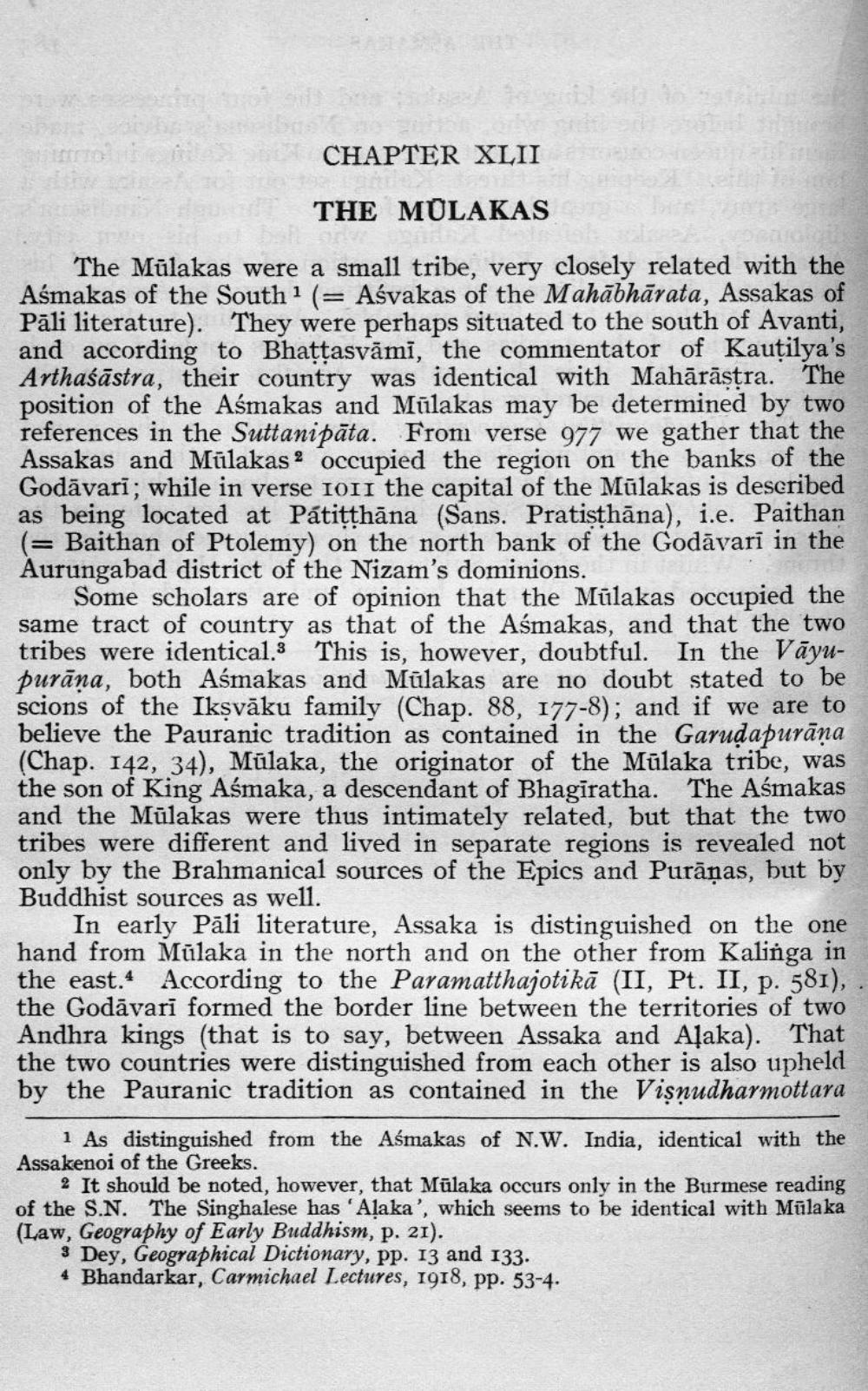________________
CHAPTER XLII
THE MOLAKAS
The Mülakas were a small tribe, very closely related with the Asmakas of the South 1 (= Ašvakas of the Mahābhārata, Assakas of Pāli literature). They were perhaps situated to the south of Avanti, and according to Bhattasvāmī, the commentator of Kautilya's Arthaśāstra, their country was identical with Mahārāstra. The position of the Asmakas and Mülakas may be determined by two references in the Suttani pāta. From verse 977 we gather that the Assakas and Mülakas 2 occupied the region on the banks of the Godāvarī; while in verse 1011 the capital of the Mülakas is described as being located at Pátitthāna (Sans. Pratisthāna), i.e. Paithan (= Baithan of Ptolemy) on the north bank of the Godāvari in the Aurungabad district of the Nizam's dominions.
Some scholars are of opinion that the Mülakas occupied the same tract of country as that of the Asmakas, and that the two tribes were identical.3 This is, however, doubtful. In the Vāyupurāna, both Asmakas and Mülakas are no doubt stated to be scions of the Ikşvāku family (Chap. 88, 177-8); and if we are to believe the Pauranic tradition as contained in the Garudapurāņa (Chap. 142, 34), Mülaka, the originator of the Mülaka tribe, was the son of King Asmaka, a descendant of Bhagiratha. The Aśmakas and the Mülakas were thus intimately related, but that the two tribes were different and lived in separate regions is revealed not only by the Brahmanical sources of the Epics and Purāņas, but by Buddhist sources as well.
In early Pāli literature, Assaka is distinguished on the one hand from Mülaka in the north and on the other from Kalinga in the east.4 According to the Paramatthajotikā (II, Pt. II, p. 581), . the Godāvari formed the border line between the territories of two Andhra kings (that is to say, between Assaka and Aļaka). That the two countries were distinguished from each other is also upheld by the Pauranic tradition as contained in the Visnudharmottara
1 As distinguished from the Aśmakas of N.W. India, identical with the Assakenoi of the Greeks.
2 It should be noted, however, that Mülaka occurs only in the Burmese reading of the S.N. The Singhalese has 'Alaka', which seems to be identical with Mülaka (Law, Geography of Early Buddhism, p. 21).
3 Dey, Geographical Dictionary, pp. 13 and 133 4 Bhandarkar, Carmichael Lectures, 1918, pp. 53-4.




